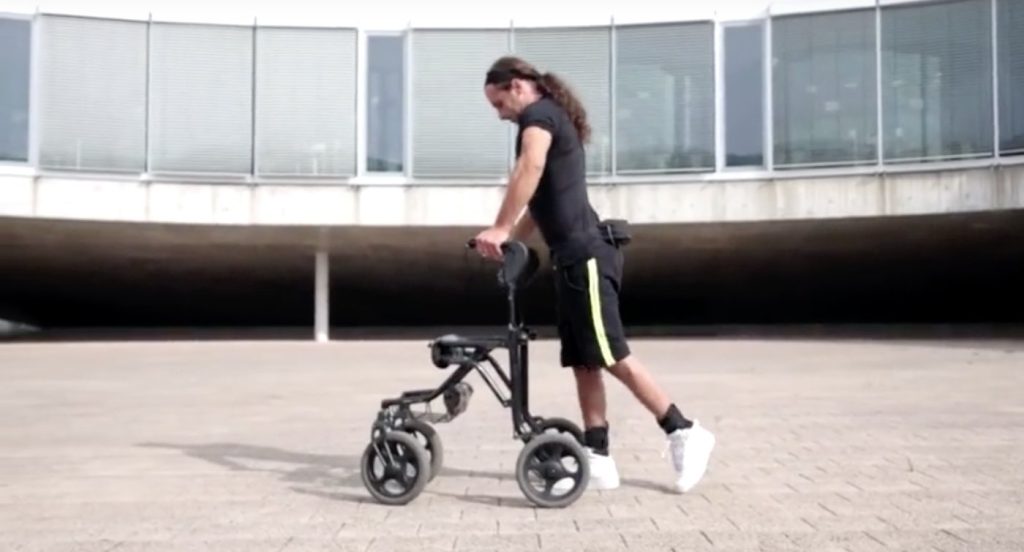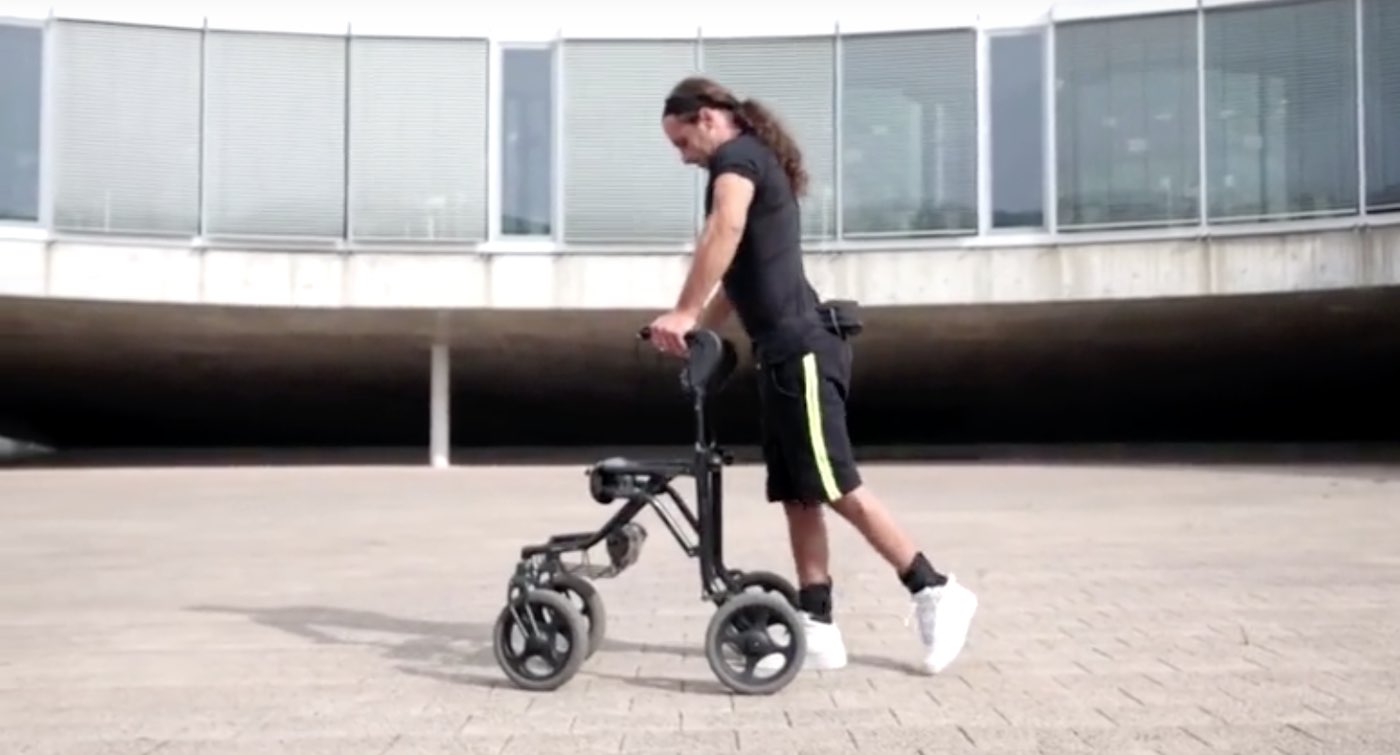
Michel Roccati was paralyzed in a motorbike accident which completely severed his spinal cord. Unlike some other forms of paralysis, there’s no therapy for him, and absolutely no sensation whatsoever in his legs.
An hour after receiving a new medical implant that emits electrical signals into his spinal cord however, he was able to take some steps supported by a wheeled-walking aid.
“I used to box, run, and do fitness training in the gym. But after the accident, I could not do the things that I loved to do, but I did not let my mood go down. I never stopped my rehabilitation,” Roccati told the BBC. “[Now] I stand up, walk where I want to, I can walk the stairs—it’s almost a normal life.”
In various cases of paralysis, damage to the spinal column prevents signals from the brain from reaching the extremities, but like a WiFi repeater, the implant carries the signals further down the body. The surgery to install the device is complex, and requires fibers to be attached to individual nerve sections.
It also contains powerful artificial intelligence software, and emits signals like nervous system biology would. Controlled by software on a tablet, pre-set programs train the electrodes on the implant to command the trunk and legs to perform certain kinds of movements.
“Within a single day, activity-specific stimulation programs enabled these three individuals to stand, walk, cycle, swim, and control trunk movements,” the researchers wrote in their recently published paper in Nature Medicine. “Neurorehabilitation [created] sufficient improvement to restore these activities in community settings, opening a realistic path to support everyday mobility.”
Backing from the study came from Dr. Ram Hariharan at the Northern General Hospital of Sheffield, UK.
MORE: Paralyzed Patient Can Now Write as Fast as Smartphone By ‘Mindwriting’ With Brain Signals
“I have not heard of any study where they have put in an implant [into a patient with a complete spinal cord cut] and demonstrated muscle movements and improving balance, enough to stand and walk,” he told the BBC. “They have done something that has not been done before.”
It’s not a complete therapy yet, as the device is too complicated to be used in everyday settings, but the rehabilitations exercise the dormant leg muscles to improve health, mood, and often restore little bits of movement capabilities.
RELATED: Scientists Demonstrate Success of a Possible ‘EpiPen’ to Prevent Paralysis From Spinal Cord Injuries
Professor Grégoire Courtine, who led the team that developed the technology, believes that if used in conjunction with stem cell regeneration, farther down the line it could bring patients back to something like normal life.
(WATCH the video for this story below.)
SHARE This Breakthrough News Story in Those Social Feeds…





















Amazing!